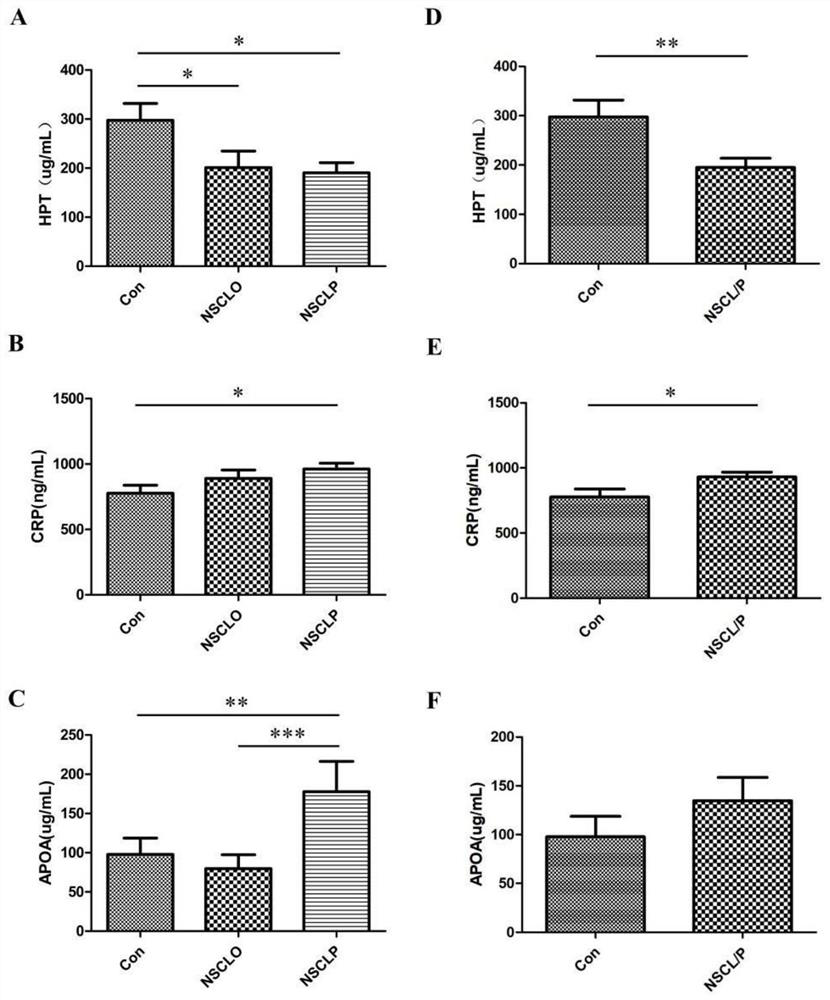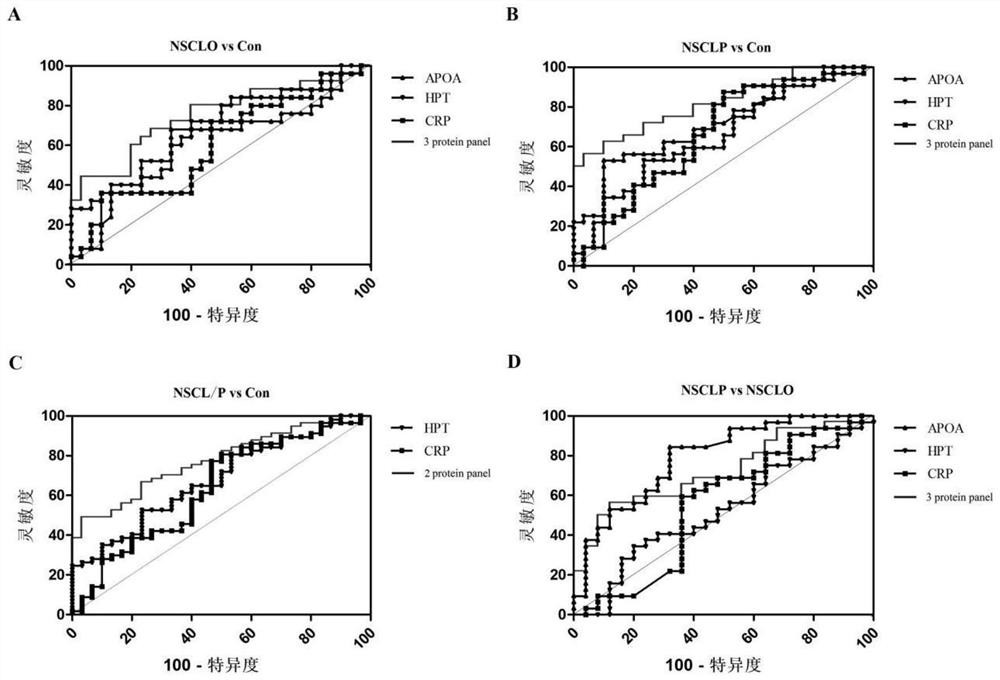Marker for predicting non-syndromic cleft lip and palate and application thereof
A technology for cleft lip and palate and syndrome, which is applied in the fields of biotechnology and medicine, can solve problems such as complex facial structure of fetuses, and achieve the effects of easy promotion, improved detection efficiency, and simple operation process.
- Summary
- Abstract
- Description
- Claims
- Application Information
AI Technical Summary
Problems solved by technology
Method used
Image
Examples
Embodiment 1
[0038] Example 1: Detection of NSCL / P by Screening Maternal Serum Protein
[0039] Detection of NSCL / P by screening maternal serum proteins APOA, HPT and CRP ( figure 1 ).
[0040] For pregnant women aged 22-34, who have been healthy in the past, are not complicated with gestational hypertension, diabetes and other systemic diseases, and have no history of genetic diseases that affect development. P, early morning fasting venous blood can be collected from the mother during the second trimester of pregnancy (16-28 weeks);
[0041] Take 2mL of venous blood and place it in a blood collection tube without additives, let it stand at room temperature for 2 hours, centrifuge at 2000g for 20min, and carefully absorb the supernatant, which is the serum;
[0042] The expression levels of proteins such as APOA, HPT and CRP in serum were detected by ELISA method, and the results were as follows: figure 2 shown. The suggested dilution concentrations of serum are 2000 times, 300000 ti...
Embodiment 2
[0047] Example 2: Screening maternal serum protein to determine whether fetal cleft lip is accompanied by cleft palate
[0048] pass figure 1 The method shown is to screen maternal serum protein APOA to determine whether fetal cleft lip is accompanied by cleft palate: For pregnant women aged 22-34, they have been healthy in the past, have no systemic diseases such as pregnancy-induced hypertension and diabetes, and have no developmental disorders. Genetic medical history, ultrasound examination shows singleton pregnancy with obvious cleft lip, and it is not sure whether the fetus is accompanied by cleft palate, you can collect early morning fasting venous blood from the mother in the second trimester of pregnancy (16-28 weeks); collect serum and ELISA to detect APOA protein level, the process is the same as the implementation example 1;
[0049] If the maternal serum APOA>56.95μg / mL, the probability of the fetus suffering from NSCLP is 84.375%, and the specificity is 68% (Tab...
PUM
 Login to View More
Login to View More Abstract
Description
Claims
Application Information
 Login to View More
Login to View More - R&D
- Intellectual Property
- Life Sciences
- Materials
- Tech Scout
- Unparalleled Data Quality
- Higher Quality Content
- 60% Fewer Hallucinations
Browse by: Latest US Patents, China's latest patents, Technical Efficacy Thesaurus, Application Domain, Technology Topic, Popular Technical Reports.
© 2025 PatSnap. All rights reserved.Legal|Privacy policy|Modern Slavery Act Transparency Statement|Sitemap|About US| Contact US: help@patsnap.com



